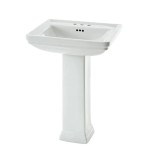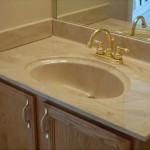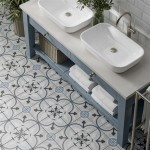Moen Bathroom Sink Drain Parts List: A Comprehensive Guide
Maintaining a functional and aesthetically pleasing bathroom requires understanding the components that make up its various fixtures. One of the often-overlooked elements is the bathroom sink drain. While it may seem simple, the drain assembly comprises several crucial parts that work together to ensure proper water flow and prevent clogs. This article will provide a comprehensive guide to the parts that make up a Moen bathroom sink drain, offering insights into their functions and considerations for replacement or repair.
Moen, a renowned brand known for its quality and innovation in bathroom fixtures, offers a wide range of sink drain assemblies. Understanding the components of these drains can be beneficial for homeowners looking to troubleshoot issues, upgrade their fixtures, or simply gain a better understanding of their plumbing systems.
1. Drain Body: The Foundation of the Drain
The drain body serves as the core structure of the sink drain assembly. It is typically made of durable materials like brass or plastic and houses the other components, providing a secure base for the drain's functionality. The body's design can vary depending on the style and functionality of the drain. For instance, some bodies may feature a slip-on design for ease of installation, while others may have a threaded design for greater stability.
The drain body also houses the drain stopper, which controls the flow of water into the drain. This stopper is typically operated by a lever, a push-button, or a pop-up mechanism. The mechanism used for operating the stopper is usually integrated into the drain body.
2. Tailpiece: Connecting the Drain to the Drainpipe
The tailpiece, sometimes referred to as the drainpipe, is the component that connects the drain body to the main drainpipe under the sink. This crucial part is typically made of brass or PVC and comes in various lengths to accommodate different sink and drainpipe configurations. The tailpiece features a threaded connection on one end that screws into the drain body and another threaded connection on the other end that fits into the drainpipe.
The tailpiece plays a vital role in ensuring a secure and leak-free connection between the sink and the drain system. It also provides flexibility in adjusting the drain's position during installation or repair.
3. Drain Stopper: Controlling Water Flow
The drain stopper, often referred to as the sink stopper, is a vital component of any bathroom sink drain. Its primary function is to control the flow of water into the drain. Moen offers various types of drain stoppers, each with its own design and operating mechanism.
Common types of drain stoppers include:
Lever-operated stoppers:
These stoppers feature a lever that raises and lowers the stopper to control water flow.Push-button stoppers:
These stoppers rely on a push button to operate the stopper mechanism.Pop-up stoppers:
These stoppers utilize a spring-loaded mechanism that pops up and down to block or allow water flow.
The choice of drain stopper often depends on personal preference, ease of use, and the design of the sink.
4. Overflow Plate and Overflow Tube: Preventing Overflow
In most bathroom sinks, an overflow plate and tube are included in the drain assembly. This system serves as a safety mechanism to prevent water from overflowing the sink. The overflow plate is located in the sink bowl, typically near the edge. The overflow tube is a small pipe that connects the overflow plate to the drain body, allowing excess water to drain away if the sink is filled beyond its capacity.
The overflow plate and tube are crucial components for preventing water damage and ensuring the proper functioning of the sink. They are typically made of metal or plastic and can be easily cleaned to maintain their functionality.
5. Strainer: Removing Debris
The strainer, sometimes called a basket strainer, is a small, removable component that is placed over the drain opening. Its primary function is to trap hair, debris, and other small items that could clog the drain. The strainer typically consists of a mesh or perforated plate that catches debris while allowing water to flow freely through its openings.
The strainer is a crucial element in preventing clogs and ensuring the smooth operation of the sink drain. It can be easily removed and cleaned to maintain its effectiveness.
6. Mounting Ring and Gasket: Securing the Drain
The mounting ring and gasket are components that secure the drain body to the sink. The mounting ring, typically made of metal, fits around the drain opening and provides a solid base for the drain body. The gasket, made of rubber or silicone, creates a water-tight seal between the drain body and the sink, preventing leaks. The mounting ring and gasket often come as a single unit, providing a secure and leak-proof connection.
These components play a crucial role in ensuring the proper installation of the drain assembly and preventing leaks. They are often designed to fit specific sink drain configurations, so it's important to choose the right parts for your sink.

Lavatory Drains Moen Solutions
_WW.gif?strip=all)
Moen 4601 Bathroom Faucet After 10 Ereplacementparts Com

Moen T4570 Bathroom Faucet Ereplacementparts Com

Moen Ca84246 Bathroom Faucet Ereplacementparts Com

Moen 11985 Replacement Pivot Rod For 50 Bathroom Drain Assembly Com

Moen T4560 Monticello Bathroom Faucet Ereplacementparts Com

Pacific Plumbing Supply Company Moen 1 4 Tailpiece Chrome Plated Plastic Metal Bathroom Sink Drain Assembly

Moen Handle Mechanism Kit For 7400 7600 Series Kitchen Faucets 93980 The Home Depot
Bathtub Parts Lynn Massachusetts

Moen Lever Handle Deck Plate Bathroom Faucet 37018769 Msc Industrial Supply
Related Posts







